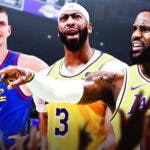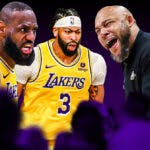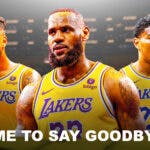Earlier this week, the Los Angeles Lakers announced that Kobe Bryant's jersey – or more like jerseys in his case – will be retired high above the rafters of the Staples Center on December 18.
Bryant, a five-time NBA champion and 18-time All-Star, is that rare breed of an athlete who can be easily recognized worldwide by a simple utter of his first name. And not only is he the first basketball player that comes to mind who's donned the numbers ‘8' and '24' the best, he's also had a couple of nicknames to his credit; most recently being dubbed as “Vino” for still balling fine like wine even at the twilight of his professional career.
However, no other nickname stood out for Bryant like “Black Mamba.”

There's something about being associated with a vicious animal that captivates even the most casual of fans. And unlike “Vino”, which was coined by Bryant's fans, it was Kobe himself who came up with the moniker of “Black Mamba” shortly after the Laker great endured arguably the most troubling moment of his professional career.
In a 2014 article in the New Yorker, Bryant recounted how he came up with the serpentine nickname as a way to reinvent himself following the sexual assault charges he faced in 2003. In dire need of a makeover, Bryant drew inspiration from the Quentin Tarantino film Kill Bill to give himself an alter ego that would send him to new heights.
In the movie, the Black Mamba was one of five venomous snakes used as a code name for each member of an assassination squad. From this description alone, it's not hard to see how Bryant's choice for his nickname fits so well with his actual on-court persona. Kobe slithered and struck his way to greatness, with his scoring prowess serving as the lethal toxin that rendered countless opponents helpless along his path.

There's even more parralelisms to be made between Bryant and Kill Bill to give the revered nickname more sense and appreciation. Uma Thurman, who played the role of The Bride in the film, was the best assassin of the five-woman group. She was given the code name Black Mamba for being the deadliest hit(wo)man of them all, considering that her fellow assassins dubbed as Copperhead, Cottonmouth, Sidewinder, and California Mountain Snake, pale in comparison to the threat from a Black Mamba. Kobe rightfully holds claim to that Mamba title, with his teammates that have come and gone in Los Angeles being mere depictions of multiple California Mountain Snakes.
Not even the titular villian of the movie, Bill (who goes by the alias Snake Charmer as the leader of the group), could stop The Bride from fulfilling her quest for vengeance. Bill here would have to be Shaquille O'Neal, who was predominantly regarded as the better player between he and Bryant during their time together as Laker buds. Like many of Kobe's teammates, O'Neal became the odd man out in L.A., with the Lakers seemingly content with Kobe running the entire show even without Shaq by his side. O'Neal's frustration with the team following the Lakers' loss to the Detroit Pistons in 2004, along with his unmeetable contract demands, eventually led to this particular Bill to kill his once-healthy ties with the Lakers organization.

Bryant's venom once again proved to be too potent — this time around, the neurotoxins were dispersed in the Buss family's very own snake pit, claiming Los Angeles as his very own and deserving breeding ground. But within a few years, Kobe landed another two-fanged strike unto the rest of the league by winning two more NBA titles. Pau Gasol was the new Copperhead; Lamar Odom, the Cottonmouth (a slight association to Odom's unfortunate drug overdose unintended). The Deadly Viper Assassination Squad was pretty much back in business, and Bryant was not just the Black Mamba anymore, he was also the next Snake Charmer.
In that same article from the New Yorker, Bryant mentioned how the fallout from his sexual assault charges led to many of his sponsors dropping him from their plans:
“After the Colorado incident, I had every major sponsor drop me, except for Nike. So I’m sitting there thinking, What am I going to do now? My vision was to build a brand [with his name Kobe] and do all these things. Now everybody’s telling me I can’t do it. The name just evokes such a negative emotion. I said, ‘If I create this alter ego, so now when I play this is what’s coming out of your mouth, it separates the personal stuff, right?’ You’re not watching David Banner—you’re watching the Hulk.”
Bryant's anecdote sheds light as for how he actually came up with the idea to create a second version of himself. Nike agreed with their top endorser's suggestion, and thus, the “Black Mamba” was born. The concept for Bryant's rebranded image didn't stop with giving himself a new nickname, as he even had a hand in the creation of his personal logo for all the apparel and gear that Nike was going to pump out. The finished product:

The reinvention was complete: Kobe had a new name, a new brand, a new start. That sick-looking logo above remains as one of the most iconic logos ever created for (or by) an NBA player. And that logo, as several fans may not be aware of until this very day, is also a reference to the Tarantino film that helped make Bryant's transformation a sheer success.
In Kill Bill, a fabled sword crafted by one Hattori Hanzo was highly sought after by The Bride in her vengeful rampage. She met Hanzo and asked for his help in forging another one of his masterpieces, but the swordsmith was reluctant to create more copies of weapons for the wrath of mankind. However, after The Bride elaborated that she'll use the sword to *ahem* kill Bill (Hanzo's former pupil who resorted to evil deeds), Hanzo agreed to make his final and finest sword for The Bride to end Bill's reign of terror. Below is an image of a real-life replica of that sword:

Notice that triangular symbol near the top of the sheath looks awfully similar to the one found on Kobe's Nike apparel. Many folks until now are probably thinking that the Kobe logo was an artsy way to somewhat portray a head of a viper. Well, it appears as though Kill Bill had its hand in Bryant's facelift yet again. It's no coincidence, either: the logo is legitimately referred to as the “Sheath”.
With help from one of the best action flicks of the 2000s, a remodeled Kobe Bryant found a second wind out of him after his drive and passion for basketball were nearly choked out by his mistakes. Kobe 2.0 didn't drastically crank his game up to a new level following the transformation; he really didn't need to. His skills and IQ on the courts never left. Rather, he just needed to don a new mask (not those masks) to continue being the Lakers' modern-day hero that he was destined to be.




